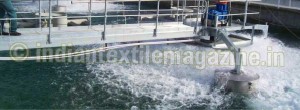Packaged wastewater systems are decentralized sewage treatment systems constructed in a fabrication plant and transported to a site  for installation and commissioning. In India there are no major market players. This offers a huge opportunity for growth, especially in the industrial, commercial and residential segments. The challenges in this industry mainly lie in bureaucratic controls and the ineffective implementation of water discharge laws. However, the situation is expected to improve with the entry of multinational companies in the country.
for installation and commissioning. In India there are no major market players. This offers a huge opportunity for growth, especially in the industrial, commercial and residential segments. The challenges in this industry mainly lie in bureaucratic controls and the ineffective implementation of water discharge laws. However, the situation is expected to improve with the entry of multinational companies in the country.
A study by Frost & Sullivan Analysis of the packaged wastewater treatment market in India finds that the market earned revenues of Rs. 1.6 billion in 2012 and estimates this to reach Rs. 2.9 billion in 2017 at a compound annual growth rate of 12.8 per cent. This market has system capacities of up to 500 kl per day (KLD). The key technologies covered under the system are moving bed bio-film reactors (MBBR), membrane bio-reactors (MBR), reverse osmosis (RO) and fluidized media reactor (FMR), as also field erected package (FEP), sequential batch reactors (SBR), up-flow anaerobic sludge blanket digestion (UASB), etc.
Indian companies have been slow in adopting packaged wastewater technologies because of the high cost of the systems, but growth in the food and beverage as well as construction industries, along with rapid urbanization, is gradually promoting demand for packaged wastewater treatment. “The need for MNCs to get quick environmental clearances is driving the demand for packaged wastewater technologies. Other than this, affordable price, compact design, quick fabrication time and easy operation and maintenance (O&M) are also increasing the penetration rate”, said Frost & Sullivan’s Environment & Building Technologies Research Analyst. “Almost all MNCs building their manufacturing units in India opt for packaged systems as well as a combination of systems such as reverse osmosis coupled with zero liquid discharge, thereby fuelling this market’s growth.”
With the Government setting wastewater discharge standards for all segments such as municipal, industrial, commercial and residential, adoption of packaged wastewater treatment will pick up soon. Penetration of these systems would further increase with more emphasis being laid on implementation of water laws by the Central Pollution Control Board (CPCB). To encourage industries to adopt wastewater treatment, the State Governments are offering tax breaks for start-up companies to set up wastewater treatment facilities. These Government regulations and initiatives, along with system features such as low cost and easy O&M, would drive the demand for packaged wastewater treatment systems in India.
Currently, however, the slow enforcement of these regulations has its impact. Low awareness on the tax benefits and decreasing cost of packaged systems add to the challenge for manufacturers. Hence, it is imperative that they demonstrate the long-term cost analysis of packaged wastewater treatment to consumers and focus on marketing initiatives to establish its importance in the market.
“Since the Indian market is highly fragmented, strategic tie-ups with local market participants, engineering, procurement and construction contractors and consultants could be a game changer. Brand endorsements are also important for the promotion of packaged water treatment in India, especially in the residential segment”, added the analyst.